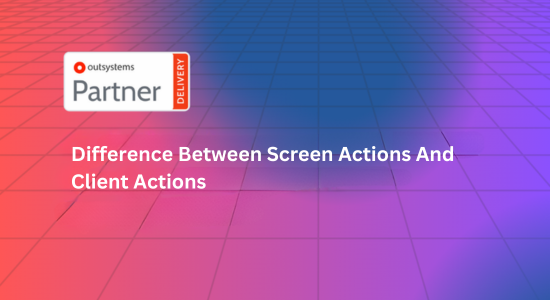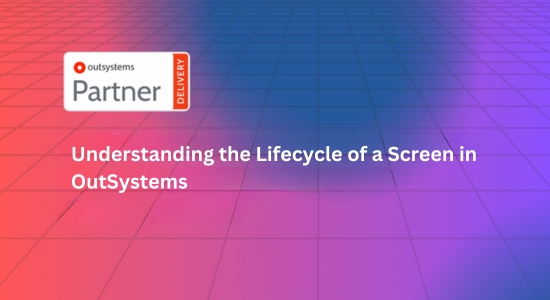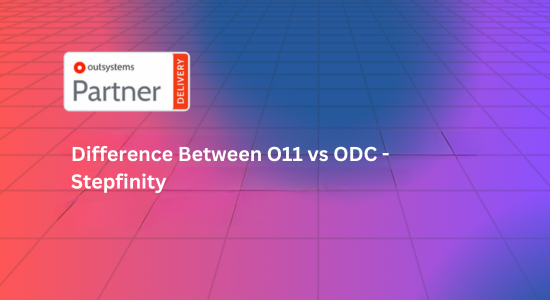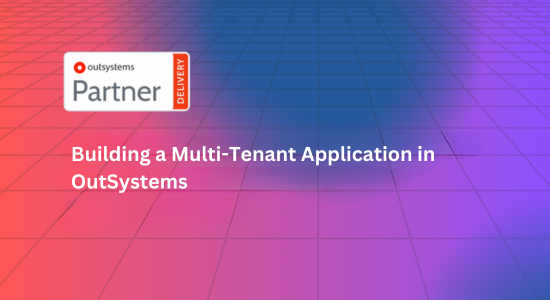In the rapidly evolving landscape of technology and business, organizations are continuously seeking innovative ways to streamline operations and enhance efficiency. One transformative approach that has gained significant traction is the use of low-code platforms. OutSystems, a leading provider of low-code application development platforms, has partnered with Stepfinity to deliver cutting-edge solutions that revolutionize business processes. This blog delves into how Stepfinity leverages OutSystems’ low-code platform to transform business processes, driving efficiency, innovation, and agility for organizations.
Understanding Low-Code Development
What is Low-Code Development?
Low-code development is a visual approach to software development that enables developers to build applications with minimal hand-coding. It involves using drag-and-drop components and pre-built templates to create applications quickly and efficiently. This approach significantly reduces the time and effort required for traditional coding, allowing developers to focus on solving business problems rather than writing complex code.
Benefits of Low-Code Development
- Speed and Agility: Low-code platforms accelerate the development process, enabling faster delivery of applications. This agility is crucial for businesses to adapt to changing market conditions and customer demands.
- Cost-Effectiveness: By reducing the need for extensive coding, low-code development lowers development costs. It also minimizes the reliance on highly skilled developers, making it accessible to a broader range of organizations.
- Enhanced Collaboration: Low-code platforms facilitate collaboration between IT and business teams. Business users can contribute to the development process, ensuring that the final product aligns with business requirements.
- Scalability: Low-code platforms are designed to scale with business needs. Organizations can start small and expand their applications as requirements grow, ensuring long-term viability and flexibility.
Stepfinity: A Trusted OutSystems Partner
Who is Stepfinity?
Stepfinity is a renowned technology solutions provider and a trusted partner of OutSystems. With a team of experienced professionals, Stepfinity specializes in delivering innovative low-code solutions that address complex business challenges. Their expertise spans various industries, including finance, healthcare, manufacturing, and retail.
Stepfinity’s Approach to Low-Code Solutions
- Consultative Approach: Stepfinity begins by understanding the unique needs and challenges of each client. Through detailed consultations, they identify key pain points and opportunities for improvement.
- Tailored Solutions: Leveraging the OutSystems platform, Stepfinity designs and develops customized low-code solutions that align with the client’s business objectives. These solutions are scalable, flexible, and user-friendly.
- Agile Methodology: Stepfinity employs agile development methodologies to ensure iterative progress and continuous feedback. This approach allows for rapid prototyping, testing, and refinement, resulting in high-quality applications.
- Comprehensive Support: Stepfinity provides end-to-end support, from initial development to deployment and ongoing maintenance. Their commitment to customer success ensures that clients achieve maximum value from their low-code solutions.
Transforming Business Processes with Low-Code Solutions
Case Studies: Success Stories of Stepfinity’s Low-Code Solutions
Case Study 1: Streamlining Financial Services
Challenge: A leading financial services provider faced challenges with their legacy systems, which were slow, inflexible, and prone to errors. They needed a modern solution to streamline operations and improve customer experiences.
Solution: Stepfinity implemented a low-code solution using the OutSystems platform. The new system automated key processes, integrated disparate systems, and provided real-time data access. This resulted in reduced processing times, improved accuracy, and enhanced customer satisfaction.
Outcome:
- 50% reduction in processing times
- 40% decrease in operational costs
- Enhanced customer satisfaction and retention
Case Study 2: Enhancing Healthcare Services
Challenge: A healthcare provider required a robust system to manage patient records, appointments, and billing. Their existing system was outdated and lacked the flexibility to adapt to evolving healthcare regulations.
Solution: Stepfinity developed a comprehensive healthcare management system using OutSystems’ low-code platform. The solution featured a user-friendly interface, seamless integration with existing systems, and compliance with healthcare regulations.
Outcome:
- Improved patient data management
- Increased operational efficiency
- Compliance with healthcare standards
Case Study 3: Optimizing Manufacturing Processes
Challenge: A manufacturing company struggled with inefficient production processes and a lack of real-time visibility into operations. They needed a solution to optimize production and enhance decision-making.
Solution: Stepfinity created a low-code application that provided real-time monitoring of production processes, predictive maintenance alerts, and data-driven insights. The solution integrated with existing machinery and systems, providing a holistic view of operations.
Outcome:
- 30% increase in production efficiency
- Reduced downtime through predictive maintenance
- Enhanced decision-making with real-time data insights
Key Features of OutSystems’ Low-Code Platform
1. Visual Development Interface
OutSystems’ low-code platform offers a visual development interface that simplifies application creation. Developers can use drag-and-drop components, pre-built templates, and visual workflows to design applications quickly and efficiently.
2. Full-Stack Development
The platform supports full-stack development, allowing developers to create both front-end and back-end components. This holistic approach ensures seamless integration and functionality across the entire application.
3. Integration Capabilities
OutSystems provides robust integration capabilities, enabling seamless connectivity with existing systems, databases, and third-party applications. This ensures that low-code solutions can be integrated into the organization’s IT ecosystem.
4. Scalability and Performance
The platform is designed to handle large-scale applications and high user loads. It offers scalability and performance features that ensure applications run smoothly, even as business demands grow.
5. Security and Compliance
OutSystems prioritizes security and compliance, offering built-in security features and compliance with industry standards. This is crucial for organizations operating in regulated industries such as finance and healthcare.
The Future of Low-Code Development with Stepfinity and OutSystems
Continuous Innovation
Stepfinity and OutSystems are committed to continuous innovation in the low-code space. They invest in research and development to enhance platform capabilities, introduce new features, and stay ahead of emerging trends.
Expanding Industry Applications
The partnership aims to expand the application of low-code solutions across various industries. By addressing unique industry challenges, they enable organizations to achieve digital transformation and stay competitive in the market.
Empowering Citizen Developers
Stepfinity and OutSystems are focused on empowering citizen developers—non-professional developers within organizations. By providing user-friendly tools and training, they enable business users to contribute to application development, fostering a culture of innovation.
Conclusion
The partnership between Stepfinity and OutSystems is transforming business processes through the power of low-code solutions. By leveraging OutSystems’ robust platform and Stepfinity’s expertise, organizations can achieve faster development, enhanced efficiency, and greater agility. As the demand for digital transformation continues to grow, the role of low-code development will become increasingly pivotal in driving business success. With Stepfinity and OutSystems leading the way, the future of low-code development looks promising, offering endless possibilities for innovation and growth.








